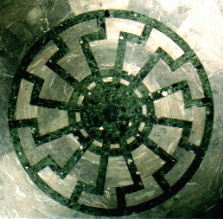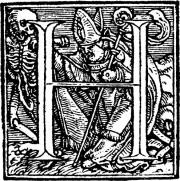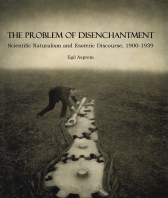2013 has been a very busy year on my end, characterised by several relocations, the opening and closing of projects and the managing of very different possible futures. By the end of the year I will have worked on 5-6 different contracts (depending on how you count), in three different countries. Right now I am in the middle of the final great transition of the year, which is the main reason why not much new material is turning up here these days. Let me, at least, let you in on the developments.
The (all too) secret history of Vril

Julian Strube’s first book, Vril, becomes a standard reference for knowledge about this peculiar concept and its even more peculiar history.
It is astonishing how much of modern occultism is dependent on works of fiction. The machinations of secret societies, the malicious rituals of satanic cults, and the magicians’ adventures on the astral plane have all been portrayed in great detail in works of fiction, which have in turn directly influenced the creation of real organisations and inspired new ritual practices among self-styled occultists. The entire current of Rosicrucian initiatory societies even had its main impetus in a text considered by its authors to be a playful ludibrium – although no doubt one that expressed deep convictions. This dynamic of fiction turning to fact is itself perhaps nowhere better explored than in Umberto Eco’s work of fiction, Foucault’s Pendulum. In recent years there has been quite some interest in such dynamics among contemporary scholars of religion as well – focusing on what they call “invented”, “hyperreal”, or “fiction-based” religions. While these scholars tend to focus on relatively recent cases – Jediism, Tolkien-spirituality and the sort – we have every reason to believe that this is a much older process. Particularly, it would seem, in the Western esoteric context.
A case in point is the concept of “vril” – an occult fluid or force that can be manipulated, controlled and directed by spiritually advanced initiates. It was invented by the the author and politician Edward Bulwer-Lytton (1803-1873) in his novel, The Coming Race (1871).
Nazi-occultism on the ContERN website
Next up in the cyberproceedings from the Contemporary Esotericism conference is a paper by Eva Kingsepp on Nazi/SS occultism, the changing perceptions of it in “official memory culture”, and its reception and influence on contemporary occulture. The primary focus is on the heavily mythologized symbol of the “Black Sun”, and the SS’ Wewelsburg castle, alleged to be the magical centre of the Third Reich, where Heinrich Himmler gathered his SS “knights” and performed sinister rituals under the occult sign of the Black Sun.
Or not. As Kingsepp shows, myths of this kind have by now been properly debunked by real historiography. That, however, does not diminish the effect of the Nazi-occult mythology in popular culture and occulture.
From the introduction:
The aim of this paper is twofold, both related to the uses of history. The first concerns the basic assumptions about Nazi occultism as a phenomenon in itself. -What are the discursive relations between official memory culture and popular culture regarding Nazi occultism? The second is to look at the Temple of Set, more specifically its Order of the Trapezoid, as an example of how an esoteric group relates to Nazi occultism and puts this, as it is being conceived by leading members of the Order, into magical use. -From where do practicing occultists working with elements from National Socialism get the theoretical basis for what might be called their magical ideology







